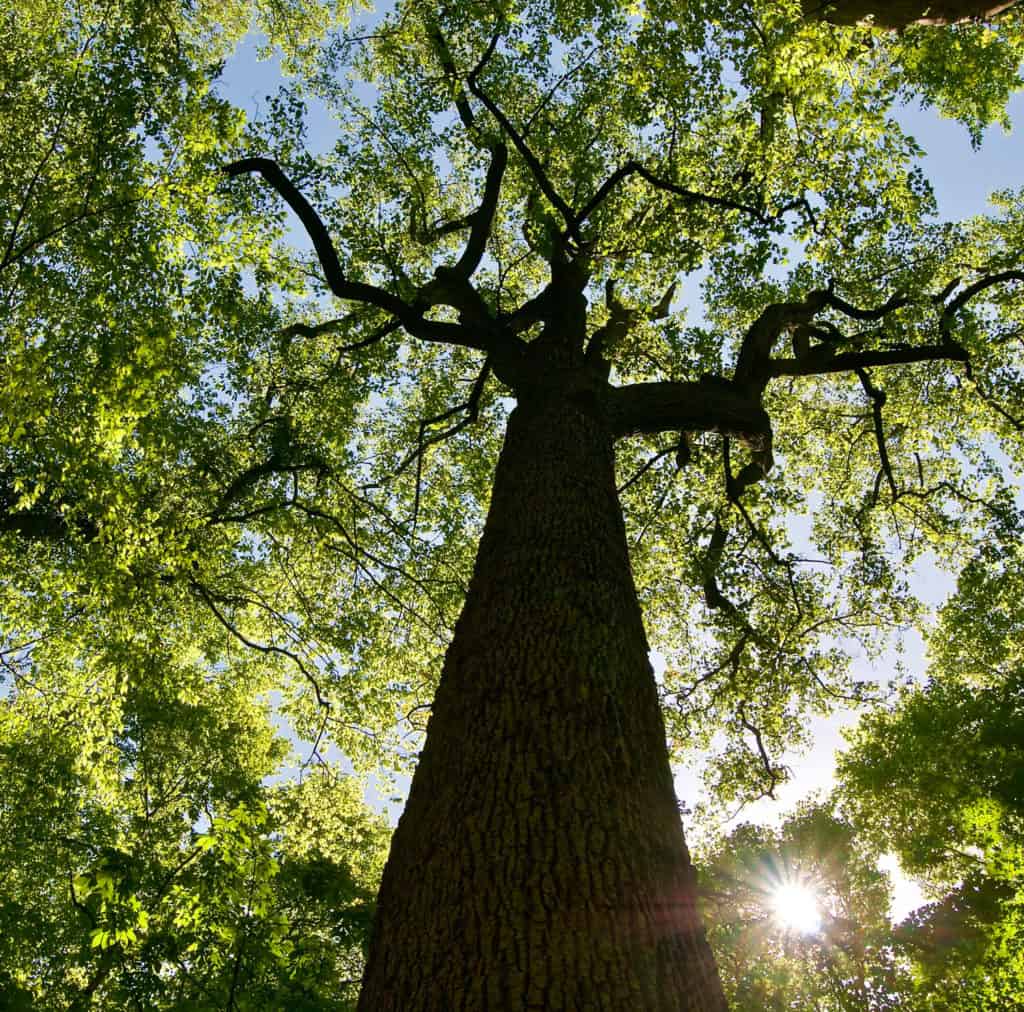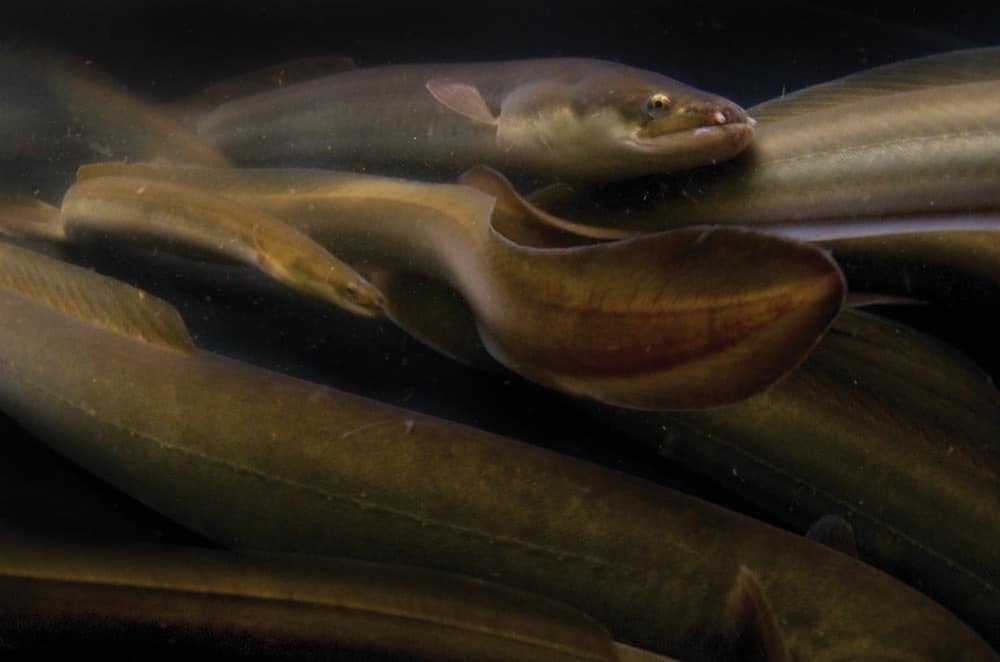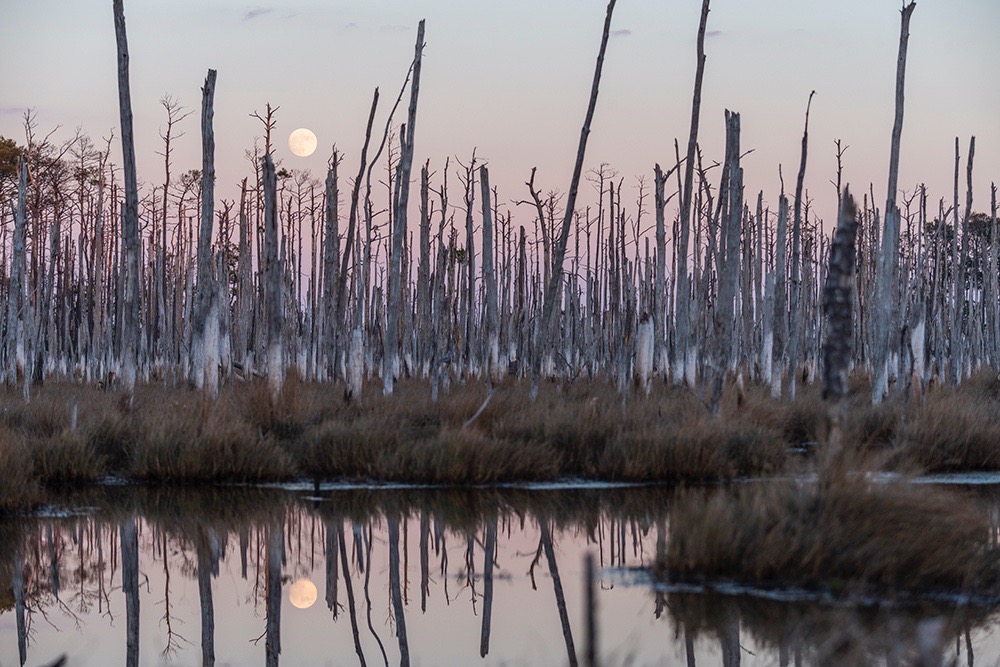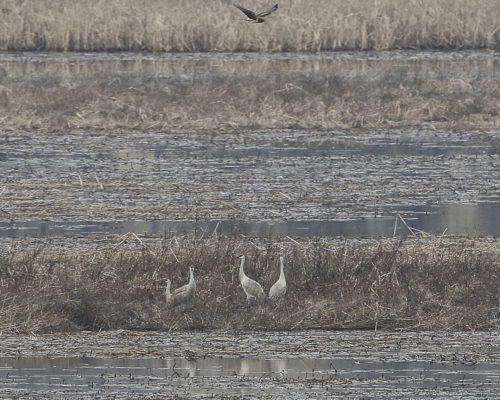John Bennett measures notable trees in the footsteps of Maryland’s original tree hugger
I think that I shall never see a poem lovely as a tree, wrote the poet Joyce Kilmer. Now, you really can’t measure or quantify loveliness, but you can certainly measure a tree. Just ask retired special-ed teacher John Bennett, who’s measured the height, spread, and trunk circumferences of over a thousand trees as the volunteer coordinator for the Maryland Big Tree program.
No, Maryland doesn’t have the vast, trackless forests of some western states or anything approaching California’s skyscraping redwoods. But Maryland does have the nation’s oldest Big Tree Program to measure sylvan standouts and record them on one of the world’s largest online big-tree databases. Mdbigtrees.com provides locations and statistics of more than 2,200 sizable trees representing more than 75 species—Alder to Zelkova.
Why measure and catalog big trees? Bennett says we owe it all to Fred Besley, Maryland’s first state forester who served from 1906 to 1942. “He was kind of like a P.T. Barnum of the forest world,” Bennett says. By that, he means he wasn’t above using stunts and gimmicks to spark citizen interest in trees and woodlands. “He started the Big Tree Program in 1925 originally as a contest to see who had the biggest trees in Maryland,” Bennett says. “People who have nothing to do with forestry might become interested in protecting the trees in their yards.”
The Maryland Department of Natural Resources Forest Service ultimately picked up the program, and most states developed big-tree programs of their own. Virginia’s program is coordinated by Virginia Tech’s Department of Forest Resources and Environmental Conservation, which maintains a database of hundreds of trees. In 1940, the conservation group American Forests (then, the American Forestry Association) launched a competition to locate and preserve the largest American tree specimens. The result is the National Register of Champion Trees.
When the budgetary ax felled Maryland’s program in 2007, it became an all-volunteer affair. That’s about when Bennett got involved. Wanting to better maintain his wooded property near Northeast in Cecil County, he joined the county forestry board and learned to measure trees, and he discovered that he is the proud owner of the 97-foot-tall, state-champion blackjack oak. Now, Bennett is the point man for the program, working with 45 or so volunteers across the state who measure trees and maintain the Big Tree List. These dendrophiles tend to do the fieldwork in the cooler months when the leafless trees are easier to measure, and ticks and mosquitoes are at bay.
“I just love seeing big trees,” says Bennett, in explaining what set him out to measure some 300 trees last year. “It’s a great way to get exercise and enjoy companionship traveling up and down the state. But measuring is the fun part. There’s also a lot of paperwork. For trees on private property, we contact the owners and get their permission to measure in writing.”
Listed trees are remeasured every 10 years and this alone keeps Bennett and crew busy. Citizens also nominate new trees to be measured for potential Big-Tree listing. There are county champions for each species, state champions, and nine Maryland trees are national champions or co-champions—the biggest trees in the country! Also, back in 1975, the state created a list of nearly 300 Bicentennial Trees that were alive in 1776 (dated via core samples or by finding references to the trees in local histories). The Big Tree crew has started updating this list as well. Folks with listed trees on their properties receive a certificate and a “Proud Owner of a Maryland Big Tree” bumper sticker.
Much has changed in the woods since Besley’s day. For instance, Bennett uses a sophisticated laser range finder and an electric clinometer to measure trees. An old-school method for estimating tree height that some might have learned in scout camp involves eyeballing a tree and a handheld yardstick and performing some triangulations. However they are measured, trees are ranked across the country using a numerical point system that Besley devised back in the day— trunk circumference in inches combined with the height in feet and one-quarter of the average crown spread. Thus, a Montgomery County sycamore scores 475 points as Maryland’s largest tree. A bald cypress in Southampton, Virginia holds that state’s top honor with a score of 612.
These days, Maryland’s mountainous regions are home to the state’s greatest forests, and there are bound to be some towering trunks out that way. But Bennett’s band can only do so much. “We could use volunteers in Western Maryland right now,” Bennett says. “But we also don’t have volunteers in St Mary’s County, and Charles County is tough for us as well.” History has sharply shaped the wooded landscape in some areas. “In Frederick, Carroll, and Washington counties, you had the Civil War coming through,” Bennett says. “They don’t have many trees that are much older than the 1860s because they were chopped up for firewood.”
It turns out, specimen trees around houses, institutions, and particularly old estates, tend to be bigger and healthier than their wild counterparts. “When people fertilize their grass or water it, that ends up at the tree roots,” Bennett says. “Plus, these trees have less competition for sunlight, nutrients, water—everything. And many people do take care of these trees because they’re part of their family.” For their last outing, Bennett and dedicated volunteer Joli McCathran from Montgomery County measured 13 trees at Talbot County’s Colonial-era Wye Plantation, home to some county champions.
Of course, no story about Maryland’s biggest trees can fail to mention a certain sylvan tragedy: Talbot County’s storied Wye Oak, blown over by a storm on June 6, 2002. “I think we all remember that day,” says Bennett. Besley himself first measured this mighty white oak in 1909 and it was thought to be more than 450 years old at the time of its demise. With a trunk more than 30 feet around and a total point score of 506, it remains the largest tree ever measured in Maryland and the largest White Oak ever recorded in the United States.
Some researchers managed to create a few Wye Oak clones, one of which is growing in the remains of the old stump. Maybe some intrepid tree measurers will be marveling at a branchy beast here in the year 2470 or so.




